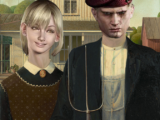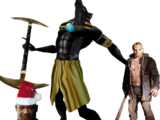A Hankerin’ For Some Heroscape
November 20, 2017
Heroscape is a game for two or more people that sees each player assembling an army to wage battle against one another on a modular, three dimensional, hex based board that is assembled before play. Each army card shows a unit’s stats, characteristics, and hit zone, along with a point value. Before drafting, players decide on a maximum point value to abide by when selecting army cards.
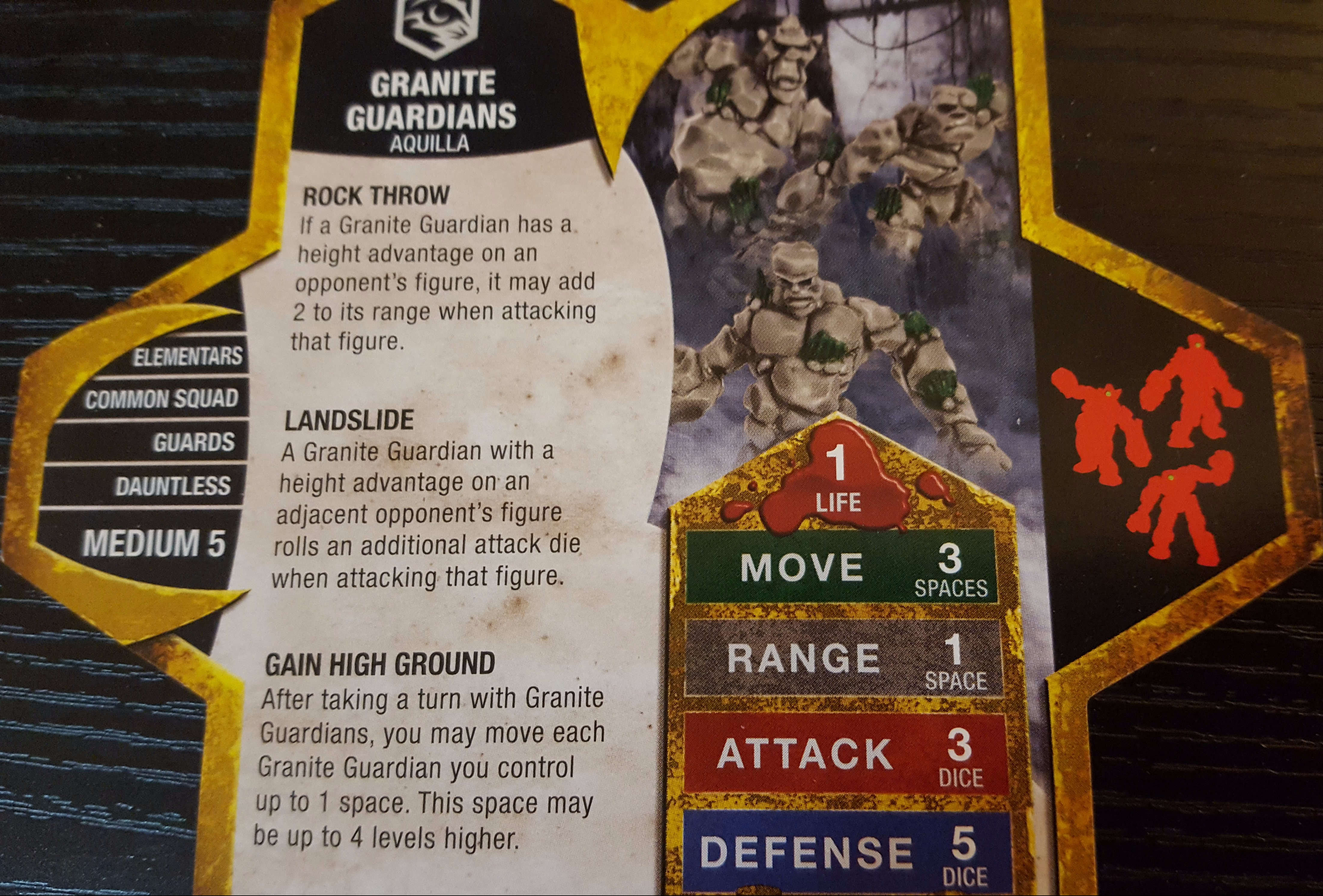
Granite Guardians Army Card
Players roll a twenty sided die. The player with the highest roll will start the draft. They choose a single army card from the stack of available units. Once chosen, they receive the corresponding figure, or figures, and place it anywhere in their designated Starting Zone. This zone usually consists of twenty to twenty four hexes, depending on the map’s size. When building the map before gameplay, these Starting Zones should be evenly spaced out to accommodate the number of players partaking in the game.
The stack of army cards then passes clockwise around the table to the next player, who repeats the process. When it is the last player’s turn to choose an army card, that player chooses two instead, and passes the stack counter-clockwise around the table(the same mechanic that Catan utilizes for initial settlement and road placement).
When the army card stack reaches the player who started the draft, they now choose two units as well, placing them in their starting zone, and passing the army card stack clockwise once again. This continues until all players have drafted army cards that have a point value sum as close to, without going over, the chosen point value maximum decided on at the beginning of the game. Price is Right style. When all players have received their chosen figures, and have placed them in their starting zones, it’s time to begin the slaughter!
A game round consists of three turns. These turns are kept track by four Order Ma-
“Four?” you ask bewilderingly.
“Yes, four,” I respond curtly, annoyed at your interruption.
One side of these FOUR Order Markers are marked with a one, a two, a three, and an X. Simultaneously and secretly, players place the four Order Markers on any of the army cards they have previously drafted. These represent you, the General of your army, dictating orders to your troops. This placement determines which units will activate throughout the round, and in what order. You may place multiple Order Markers on the same army card to activate them multiple times in a round. When all players have placed their Order Markers, they each roll a twenty sided die to determine who will be the first player for that round. That player then reveals their Order Marker with the one on it, and activates that unit. Once movement and any combat is resolved, in a clockwise fashion, the next player reveals and activates their number one Order Marker.
When all Order Markers have been revealed, the round ends, and players repeat the above steps until the win condition has been achieved. We usually just play straight up deathmatch, but the base set rulebook does come with scenarios you could play. Now, onto combat and the many dice you will inevitably be rolling!
Each army card will display a unit’s stats on the right hand side. They will have a life total, movement value, range value, and of course, an attack and defense value. Their life total measures how many hits they can take before that unit is destroyed and removed from the board. Their movement value represents the number of hexes the figure can move during a single activation(barring any additional bonuses or penalties from special powers or moving up in height). Their range value denotes the maximum number of hexes they can be away from another figure and still be able to hit them. And their attack and defense values indicate the number of six sided dice they roll when their figure is attacking, or being attacked by, another figure.
During an army card activation, the player must choose to move some or all of the figures associated with that army card before they choose to attack. Any movement not taken by a figure after it makes an attack is lost. The attacker rolls a number of dice equal to the attack stat on that units army card. The defending figure rolls a number of dice equal to the defense stat on their army card. If the attacker rolls more red skulls than the defender rolls blue shields, the defending unit suffers wounds equal to the difference in the two values. If that number, plus the number of wounds already suffered by the unit, if any, equal or exceed its life total, the figure is removed from the board and returned to its army card.
Before this happens, however, the attacker must check for line of sight. On each army card, a unit’s hit zones are depicted in red. The place they draw their line of sight from is marked with a green dot. If there is a dispute between players about line of sight, they can each line up their sight with the green dot of the attacking figure. From this vantage point, if they can see any part of the defending figure’s hit zone, as depicted on their army card, then the attack can be made. This is a really silly, quick and surprisingly satisfying way to settle line of sight.
And that’s really about it, a quick rules overview for a relatively simple miniatures wargame. Each army card has a Basic side for an even simpler version of the game that is really accessible to younger players. There are some finer rules to do with movement and terrain and stuff like that, but really not that much. Most of which you can choose to ignore if you want to, or you can build a simpler map. The real complexity to the game comes from the special abilities that the units have, and the different characteristics they have.
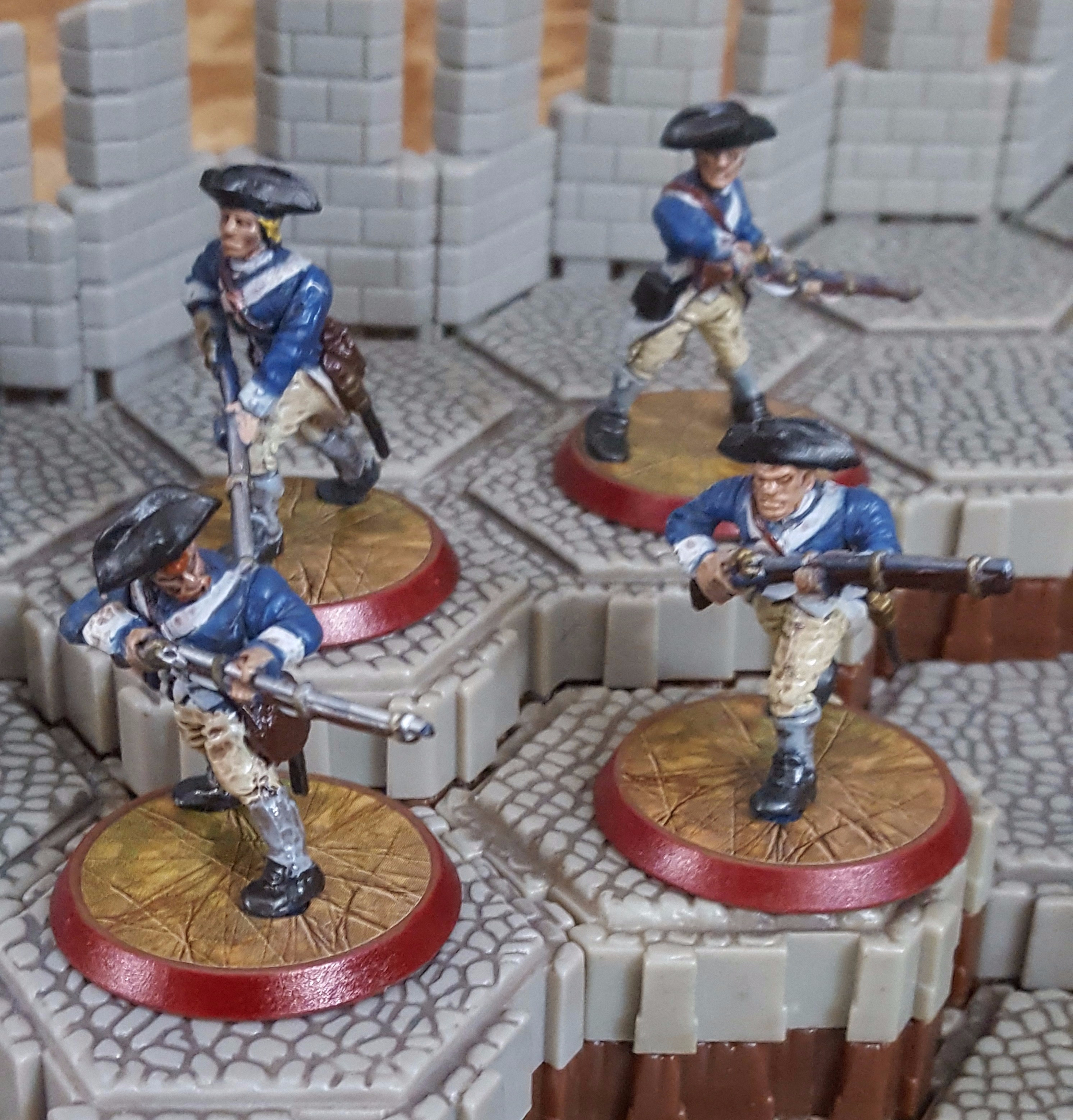
The Valiant 4th Mass!
All of which comes into play during the draft. Army drafting is the meaty part of the game. It’s where you develop your strategy, and where you really start to interact with your opponents. I’ve drafted the 4th Massachusetts Line, and they have a Valiant personality. If the rest of my army is Valiant too, they get a little more hearty and resilient! Adding an additional defense die when defending. Touches of thematic stuff like that.
I see you over there Marty, drafting Cyprien Esenwein, with his crazy powerful vampire powers and his Chilling Touch that drains the life out of you. Well I’ll just go ahead and counter draft Major X17 with his wicked cool Improved Cyberclaw that can give ya the clamps and lock you in place! Keeping you away from my other units. And, since he’s a Soulborg(robot with a soul?) your Chilling Touch can’t do shit to me!
Or, crap, Moby went and drafted Charos, a massive green dragon with a ridiculous life total. Looks like Sir Denrick is joining my team, who is a literal Giant Killer and gets two extra attack dice against Huge figures.
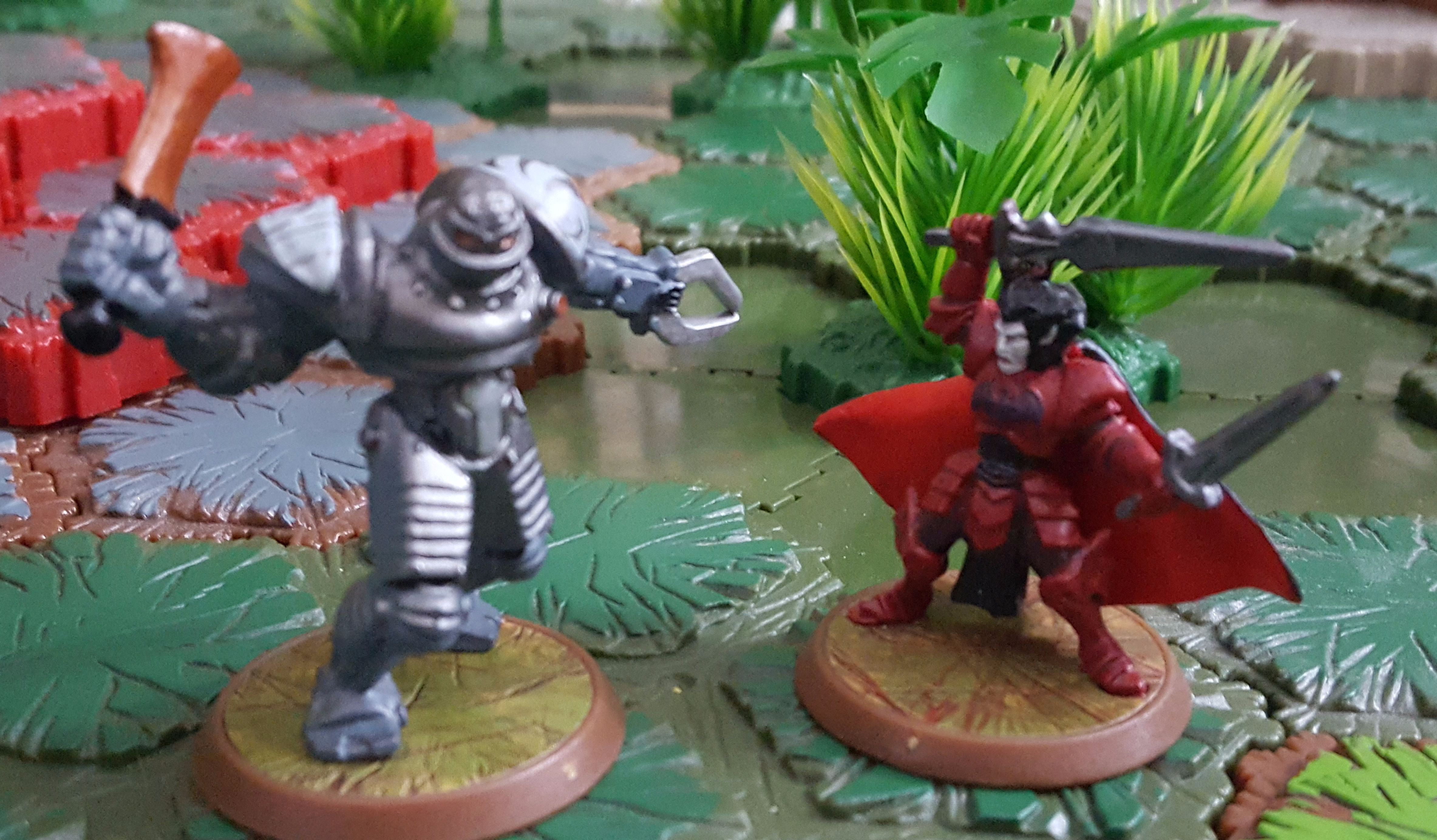
Major X17 about to lay the smack down on Cyprien’s vampire ass
Even if you’re not worrying about counter drafting to you opponents, you can focus on building the most synergistic army possible. Drafting a set of the orc Arrow Gruts lets you do Beast Bonding, where you get a free activation with any figure with the Beast characteristic in your army. Wicked, guess I’ll take Krug too, a badass troll with the Beast characteristic that adds more attack dice the more he gets wounded, and he has double attack! So run him on in to soak up some damage then smash the hell out of whatever is in his way, using the Arrow Gruts to pick off any survivors from a safe distance away.
“But Leland, orcs and trolls are boring,” you say. Why not make a wolf army with pouncing Wolves of Badru and the Werewolf Lord that spreads his Lycanthropy disease to other figures he bites, allowing to possibly take control of them as they succumb to the Moon Frenzy? Or maybe you want to play as an alien race called the Marro who have pale, stretched skin and slits for eyes and ride skeletal dragons and giant, trampling humanoids? Or draft honourable samurai who can counterattack and deal damage to attackers if they can roll more shields than their opponent rolls skulls. Or dinosaurs! Grimnak’ll show you how to tame a T-Rex and swallow figures whole!
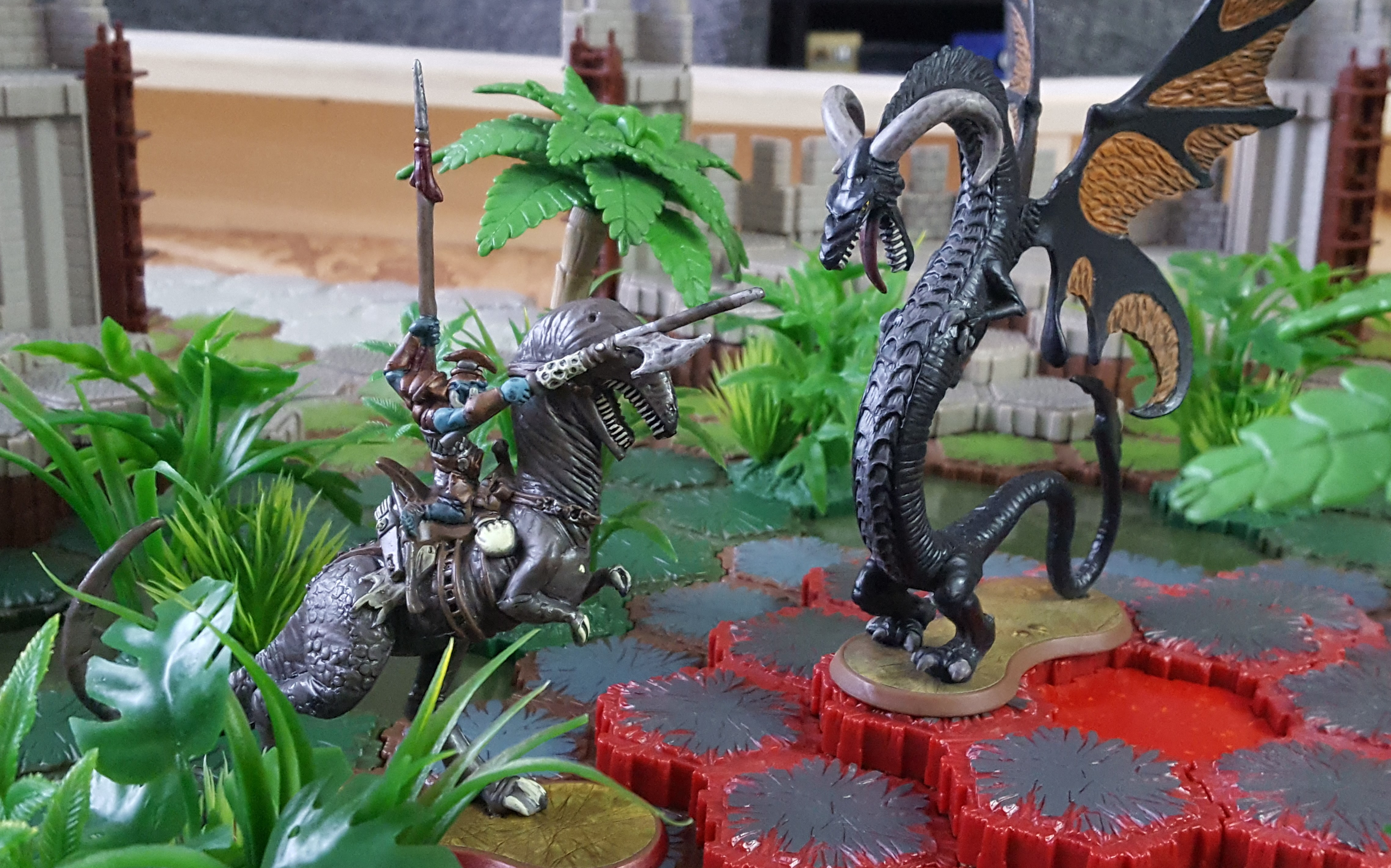
Grimnak taking on Braxas the Dragon Queen as she defends with height advantage
Or or or, and and and! There are seriously so many ridiculously cool choices of armies you can make in this game I could try to list them all and forget as many as I remembered. One of my many favourites is Warden 816. What’s his real name? I don’t know. What or where is he the warden of? No idea! But it’s a place where he needs to sport a giant ass rifle with a chainsaw on the end of it so he can Evisceraxe anyone or anything that gets out of line. I love it. I fucking love it.
A huge component of this game is the modular board. It comes with a myriad of differently sized and shaped tiles ranging from a single hex to a huge twenty four hex piece. Depending on the complexity of the map, it can take a while to put together. This game definitely benefits from some setup prep before the players arrive. At least, that’s what I usually do anyways. I suppose you could kind of have all of the players just haphazardly adding pieces to the map, but you’d end up with a jumbled mess that would just drive me nuts.
For me, building the maps is half the fun. There’s some software out there called Virtualscape that you can input the sets that you have in your collection, and it lists the available terrain you have to build with. You then just select a tile and drag it over to the hexagonal grid and build away. Moving up or down levels at your leisure. It even renders a 3-D model for you that you can rotate around and see how your work looks before actually building it.
I’ve spent hours using this thing, making dozens of maps for all different player counts. I built one of my favourite ones I’ve ever created today to take some pictures. A five player map that took me a solid hour and a half to put together, even with my Virtualscape instructions. Most of that time came from digging around for the proper pieces since I have a metric buttload of it.
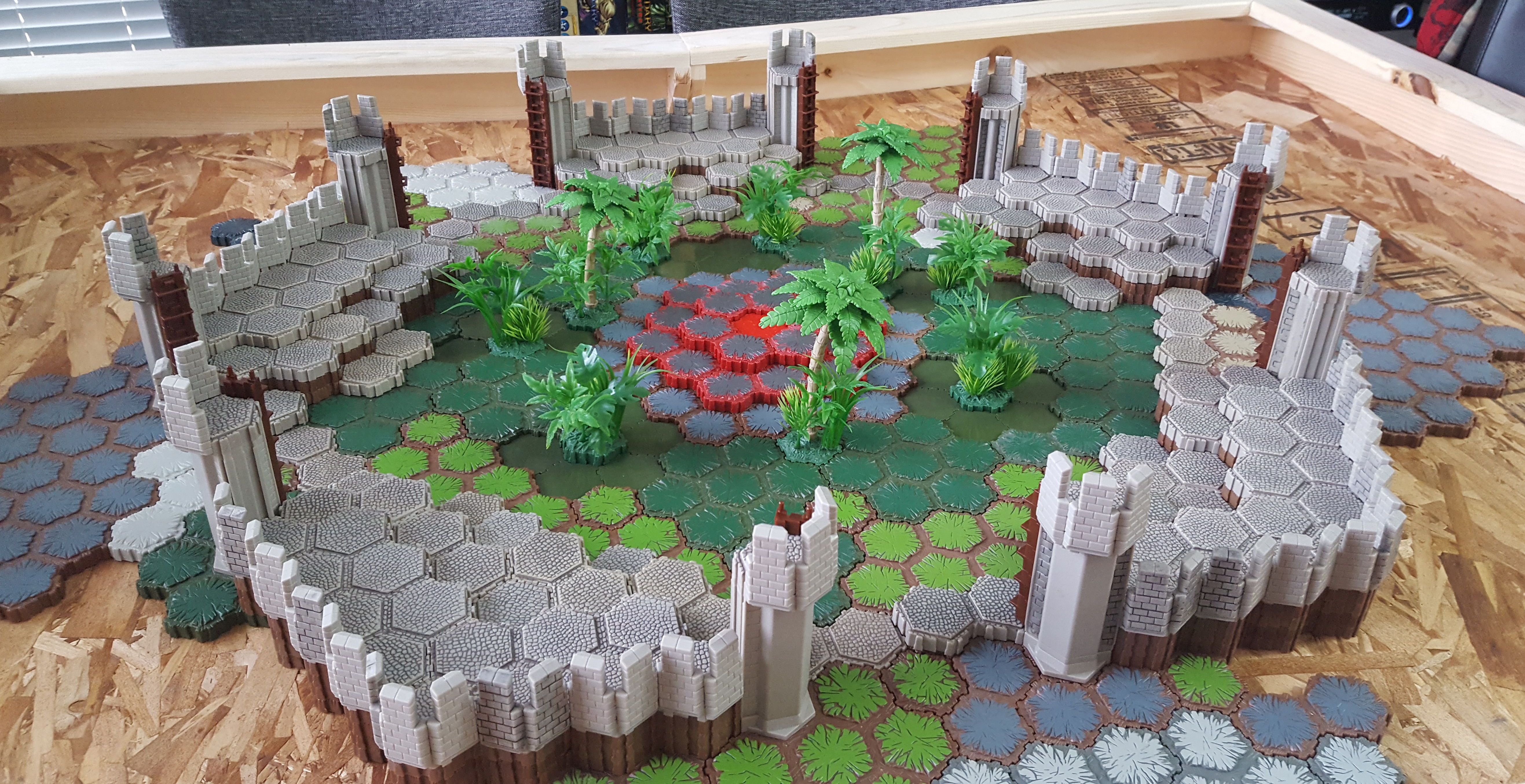
Behold, THE ARENA!!!
As you can see, there are a number of different terrain types that add their own minor rules addition. Like a figure needing to end their movement when they first step onto a water tile. Or a figure that uses its entire movement on road hexes gets to add an additional three hexes to their movement. Figures that end a round standing on a lava field hex might take some damage. If you step into actual lava, your figure just straight up dies(well, you get to roll a D20, on a twenty, your figure survives).
There’s even a castle set that comes with walls and ladders and a big door that you can barricade. It comes with it’s own army card to keep track of the damage it takes when under siege. All you need is a bit of different terrain to change the win condition. Give one player the castle and have them defend it against the rest of the players like a one versus many style game. Want a king of the hill style? Build a literal hill in the center of the map and load it up with some of the power glyphs that come with the game and fight it out.
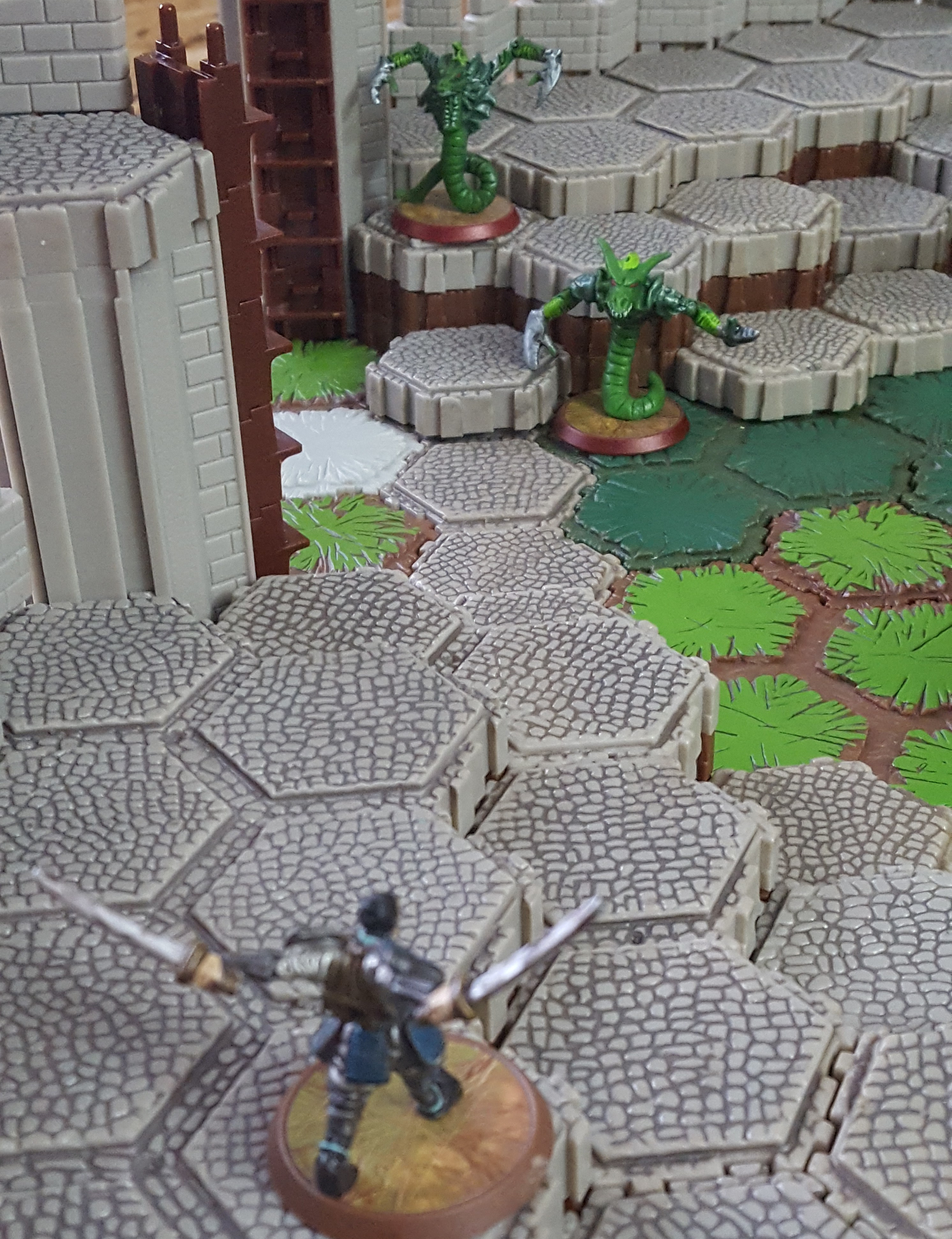
With this Kozuke Samurai’s Charging Assault and the extra road space movement, those Armoc Vipers might be in some trouble!
But watch out though, some of those glyphs are bad! Like the pit trap that keeps your figure stuck in that spot until you can get a guy next to them to pull them out. Or, the potentially BRUTAL massive curse glyph. For this one, every player must roll a D20 for each of their figures on the board. If they roll a one, that figure is destroyed. I always randomly select glyphs and place them face down on the board so we never know which ones are which until you step on them, and that damn curse gets in there every. Single. Time. And I always lose at least two figures to it!
All the extra terrain rules thematically make some sense. My figure is standing next to some jungle bushes, so they get an additional defense die against ranged attacks, as if they are kind of camouflaged by the foliage. The types of terrain on the map can influence how a player drafts their army as well. Some units may be better adapted for certain environments. The Greater Ice Elemental has Cold Healing, meaning it removes one wound from its army card if it ends its turn standing on snow or ice.
The game design is just smart and simple. Every little part of the game has an impact on some other little part of the game. Usually resulting in a specific strategy choice or a tactical shift. Take placing Order Markers for example. This is another part of the game where player interaction plays a role. It’s a subtle interaction, but an important one. You can see where an opponent has placed their Order Markers. You don’t know which numbers are where, and you certainly don’t know where that X is.
Now you have a few tactical choices to make. Do you try and target their units that have no Order Markers on them, knowing that those units won’t even get a chance to fight back since they won’t be activated this round? Do you take a round to advance some of your units to better positions knowing that your opponent’s activating units are too far away from you to do any damage this round? Maybe you try to fake out your opponent with that X Order Marker and try to make it look like you’re going to charge in with your heavy hitter, but then flank them with some smaller, faster units instead.
Lots of little, in the moment decisions that keep every phase of the game engaging and meaningful in some way, and that keep them from getting stale or feeling samey throughout a game. Because, depending on player count and army value, this game can get quite lengthy. Four and five hour games, not including setup, are not uncommon in my experience. And half of that is usually just the draft! Back when I was playing Heroscape pretty damn regularly, I was developing an army drafting app, but never got it off the ground. Something where players could schedule a game and draft their armies during the day or days before the scheduled play time. If Heroscape was around nowadays, that would totally be a thing. The kind of app integration I can get behind.
Alright Reader, final thoughts time. In case you haven’t picked up on it, I love this game! I love it for how surprisingly thematic it is, for how those themes are mish mashed together and for how it keeps me engaged even when it’s not my turn. Despite the incredible randomness that is inherent with a dice combat based game, it still feels as balanced as it’s going to get. Mostly because the onus for that balance is put on the players when they’re drafting their armies. If you get stomped by your opponent, most likely it’s because you drafted a shit army. Or, you sent in the wrong units at the wrong time. Don’t charge in with the slow moving Knights of Weston to try and take out some Arrow Gruts with height advantage who can pick you off from six hexes away before you can even get next to them to make an attack.
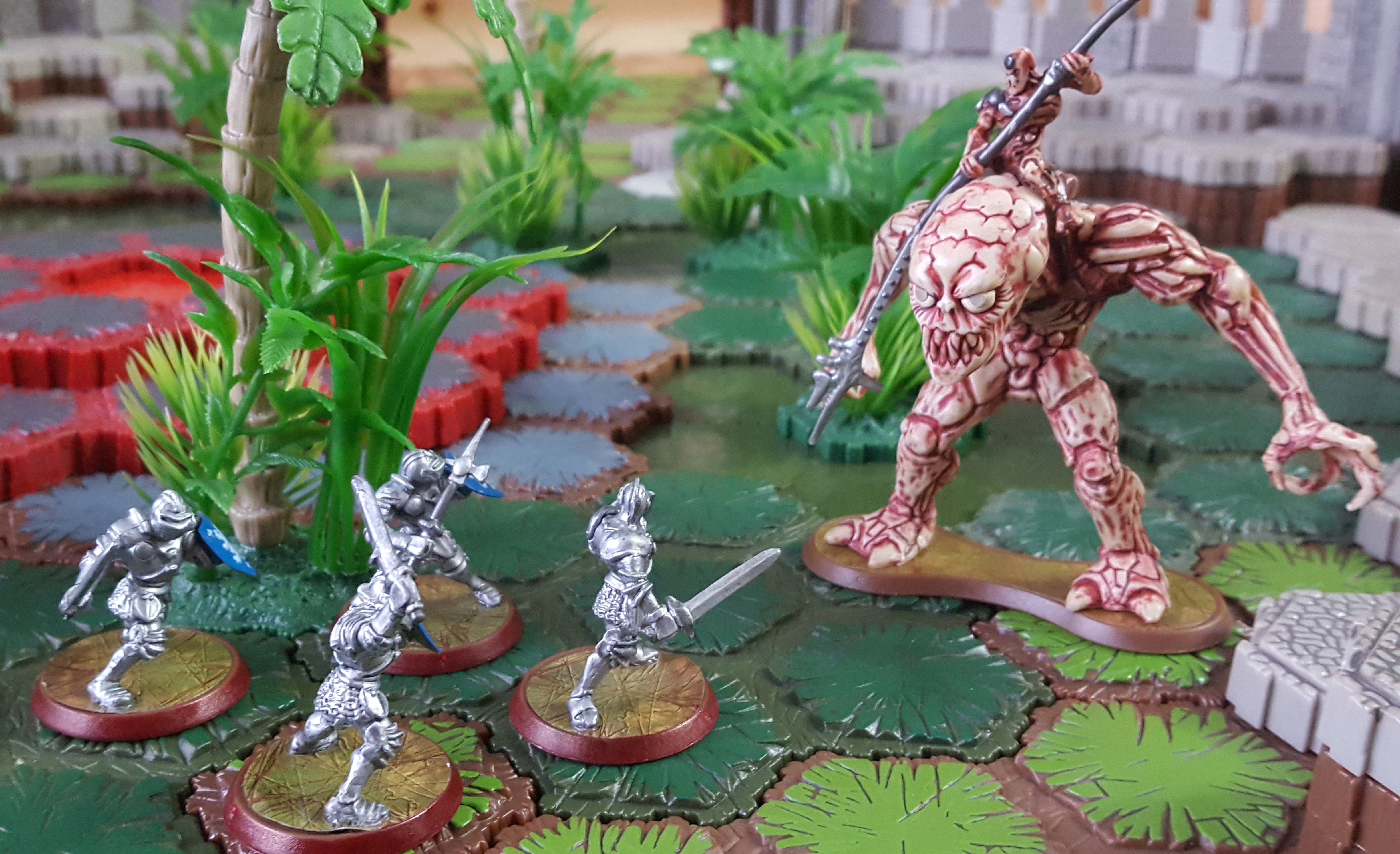
TOOOORRR KUUUUULL NAAAAA
It’s a travesty that Heroscape isn’t around anymore, been dead since 2010. And unless you want to pay hundreds of dollars for a master set, getting your hands on this game is difficult. I want to get into other miniature gaming but feel like they just wouldn’t compare to how much I love Heroscape. Still need to give Star Wars X-Wing a try, I’ll let you know when I do. Like I mentioned in the podcast episode, if you want to chat about Heroscape, I could go on all damn day and night about it, so hit me up if you can tolerate more of my ramblings! Thanks for checking in on me Reader! Stay in touch.
L.

